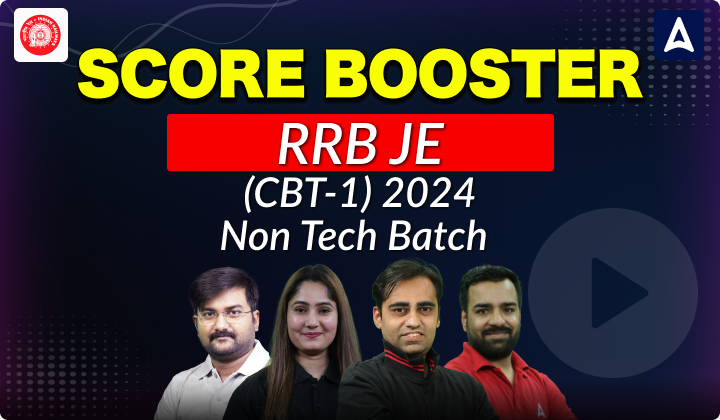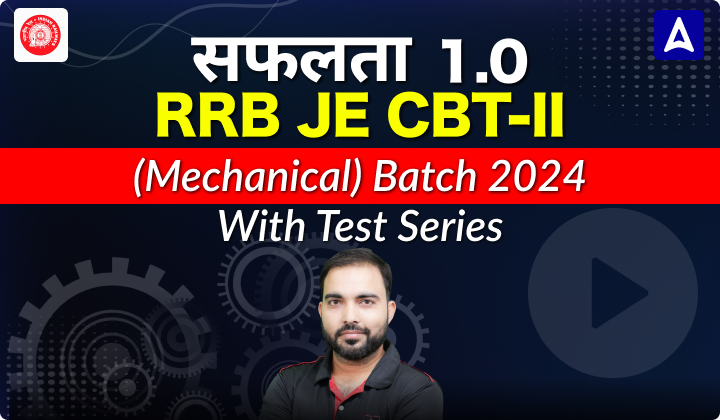Table of Contents
GATE Syllabus 2022 Life Sciences
GATE Syllabus 2022 Life Sciences: IIT Kharagpur is the conducting authority for GATE Exam 2022. GATE Exam 2022 is for the candidates who are aspiring to get admission into M.E./M.Tech/Ph.D. at the IITs, NITs, IIITs, and CFTIs. GATE Score 2022 is also useful for getting a reputed job as an engineer in some Public Sector Undertakings. GATE 2022 Score would be valid for three years after the announcement of GATE Result 2022. The total number of papers has been increased to 29 Subjects by adding two new subject papers. These Two new papers are GE (Geomatics Engineering) and NM (Naval Architecture and Marine Engineering). GATE Exam 2022 will be conducted on 05th, 06th, 12th, and 13th February 2022. To get desired job or college through GATE Exam 2022 for Life Sciences, the candidates must get marks more than GATE Cut Off 2022. GATE Exam 2022 dates are announced by IIT Kharagpur on the official website. To get good marks in GATE Exam 2022 for Life Sciences, the candidates must know GATE Syllabus 2022 Life Sciences in depth. If they plan and strategize well according to GATE Syllabus 2022 for Life Sciences, then they can grasp and revise the concepts very well to ace GATE Exam 2022 for Life Sciences. In this article, we have covered everything regarding GATE Syllabus 2022 for Life Sciences. The candidates must read the full article to know about GATE Syllabus 2022 for Life Sciences and shall bookmark this website for further updates about GATE Exam 2022 for Life Sciences.
GATE Syllabus 2022 Life Sciences – Overview
| GATE Syllabus 2022 Life Sciences | |
| Name of Conducting Authority | IIT Kharagpur |
| Name of Exam | Graduate Aptitude Test in Engineering |
| Category | Engg Jobs |
| Mode of GATE Exam 2022 | Online |
| Total Number of Papers | 29 |
| GATE Exam 2022 Admit Card release date | 03rd January 2022 |
| GATE Exam 2022 date | 05th February 2022 06th February 2022 12th February 2022 13th February 2022 |
| GATE 2022 Official Answer Key Release Date | 10 days after the exam |
| GATE Result 2022 | 17th March 2022 |
| Official Website | @gate.iitkgp.ac.in |
GATE Exam 2022
GATE Exam 2022: Graduate Aptitude Test in Engineering is one of the most reputed examinations in India. It opens so many opportunities for candidates to grow their careers. GATE Exam 2022 is a computer-based standardized test conducted at the national level in India with an aim to examine the understanding of students in subjects like Engineering and Science.
GATE Exam Pattern 2022 Life Sciences
GATE Exam Pattern 2022 Life Sciences: The GATE 2022 Exam for Life Sciences will ask questions to check your Application, Analysis, Comprehension, Recall, and Synthesis abilities. All the questions will be Either MCQ or NAT (Numerical Answer Type). According to the new GATE 2022 Exam Pattern for Life Sciences, Some MSQ questions will also be there in the paper where more than one answer can be correct out of four given choices.
The candidates must check GATE Exam Pattern 2022 for Life Sciences through the table given below to get a clear idea about GATE Exam 2022 for Life Sciences so that they can ace GATE Exam 2022 for Life Sciences.
| GATE Exam Pattern 2022 Life Sciences | |
| GATE Exam 2022 Mode | Computer Based Test (Online) |
| GATE Exam 2022 Duration | 3 Hours |
| GATE Exam 2022 No. of Subjects | 29 Subjects |
| GATE Exam 2022 Total Marks | 100 Marks |
| GATE Exam 2022 Number of Questions | 10 (GA) + 55 (subject) = 65 Questions |
| GATE Exam 2022 Type of Questions | Multiple Choice Questions, Multiple Select Questions, and Numerical Answer Type Questions |
GATE Syllabus 2022 Life Sciences PDF
GATE Syllabus 2022 Life Sciences PDF: The candidates can download GATE Syllabus 2022 Life Sciences PDF through the direct link given below for the ease of candidates. The candidates must know GATE Syllabus 2022 Life Sciences to ace GATE 2022 and get admission in a reputed college or job in a reputed organization for Life Sciences. Knowing GATE Syllabus 2022 will help the candidates aspiring for GATE 2022 to get good marks and success as they can plan and strategize beforehand according to GATE Syllabus 2022 Life Sciences.
Click to download GATE Syllabus 2022 Life Sciences PDF
GATE Syllabus 2022 Life Sciences
Chemistry (Compulsory for all candidates)
Section 1: Atomic Structure and Periodicity
- Planck’s quantum theory,
- wave particle duality,
- uncertainty principle,
- comparison between Bohr’s model and
- quantum mechanical model of the hydrogen atom,
- electronic configuration of atoms and ions.
- Hund’s rule and Pauli’s exclusion principle.
- Periodic table and periodic properties: ionization energy,
- electron affinity, electronegativity and atomic size.
Section 2: Structure and Bonding
- Ionic and covalent bonding, \
- MO and VB approaches for diatomic molecules,
- VSEPR theory and shape of molecules,
- hybridization,
- resonance,
- dipole moment,
- structure parameters such as bond length,
- bond angle and bond energy,
- hydrogen bonding and van der Waals interactions.
- Ionic solids,
- ionic radii and
- lattice energy (Born‐Haber cycle).
- HSAB principle.
Section 3: s, p and d Block Elements
- Oxides,
- halides and hydrides of alkali,
- alkaline earth metals,
- B, Al, Si, N, P, and S.
- General characteristics of 3d elements.
- Coordination complexes: valence bond and
- crystal field theory, color,
- geometry,
- magnetic properties and
- isomerism.
Section 4: Chemical Equilibria
- Osmotic pressure,
- elevation of boiling point and
- depression of freezing point,
- ionic equilibria in solution,
- solubility product,
- common ion effect,
- hydrolysis of salts, pH,
- buffer and their applications.
- Equilibrium constants (Kc, Kp and Kx) for homogeneous reactions.
Section 5: Electrochemistry
- Conductance,
- Kohlrausch law,
- cell potentials,
- EMF,
- Nernst equation,
- thermodynamic aspects and their applications.
Section 6: Reaction Kinetics
- Rate constant,
- order of reaction,
- molecularity,
- activation energy,
- zero, first and second order kinetics,
- catalysis and elementary enzyme reactions.
- Reversible and irreversible inhibition of enzymes.
Section 7: Thermodynamics
- Qualitative treatment of state and path functions,
- First law,
- reversible and irreversible processes,
- internal energy,
- enthalpy,
- Kirchoff equation,
- heat of reaction,
- Hess’s law,
- heat of formation.
- Second law,
- entropy and free energy.
- Gibbs‐Helmholtz equation,
- free energy change and spontaneity,
- Free energy changes from equilibrium constant.
Section 8: Structure-Reactivity Correlations and Organic Reaction Mechanisms
- Acids and bases,
- electronic and steric effects,
- Stereochemistry,
- optical and geometrical isomerism,
- tautomerism,
- conformers and concept of aromaticity.
- Elementary treatment of SN1, SN2, E1, E2 and radical reactions,
- Hoffmann/Saytzeff rules,
- addition reactions,
- Markownikoff rule and Kharasch effect.
- Elementary hydroboration reactions.
- Grignard’s reagents and their uses.
- Aromatic electrophilic substitutions,
- orientation effect as exemplified by various functional groups.
- Identification of common functional groups by chemical tests.
Section 9: Chemistry of Biomolecules
- Amino acids,
- proteins,
- nucleic acids and nucleotides.
- Peptide sequencing by chemical and enzymatic proteolytic methods.
- DNA sequencing by chemical and enzymatic methods.
- Carbohydrates (upto hexoses only).
- Lipids (triglycerides only).
- Principles of biomolecule purificationIon exchange and gel filtration chromatography.
- Identification of these biomolecules and BeerLambert’s law.
Biochemistry
Section 1:
- Organization of life;
- Importance of water;
- Structure and function of biomolecules: Amino acids,
- Carbohydrates,
- Lipids,
- Proteins and Nucleic acids;
- Protein structure,
- folding / misfolding and function;
- Myoglobin,
- Hemoglobin,
- Lysozyme,
- Ribonuclease A,
- Carboxypeptidase and Chymotrypsin.
Section 2:
- Enzyme kinetics,
- regulation and inhibition;
- Vitamins and Coenzymes;
- Bioenergetics and metabolism;
- Generation and utilization of ATP;
- Metabolic pathways and their regulation: glycolysis,
- TCA cycle,
- pentose phosphate pathway,
- oxidative phosphorylation,
- gluconeogenesis,
- glycogen and fatty acid metabolism;
- Metabolism of Nitrogen containing compounds: nitrogen fixation,
- amino acids and nucleotides.
- Photosynthesis, Calvin cycle.
Section 3:
- Biochemical separation techniques: ion exchange,
- size exclusion and affinity chromatography,
- centrifugation;
- Characterization of biomolecules by electrophoresis;
- DNA- protein and protein – protein interactions;
- UV-visible and fluorescence spectroscopy;
- Mass spectrometry.
Section 4:
- Cell structure and organelles;
- Biological membranes;
- Action potential;
- Transport across membranes;
- Membrane assembly and Protein targeting;
- Signal transduction;
- Receptor-ligand interaction;
- Hormones and neurotransmitters.
Section 5:
- DNA replication,
- transcription and translation;
- DNA damage and repair;
- Biochemical regulation of gene expression;
- Recombinant DNA technology and applications: PCR,
- site directed mutagenesis,
- DNA-microarray; Next generation sequencing;
- Gene silencing and editing.
Section 6:
- Immune system: Innate and adaptive;
- Cell of the immune system;
- Active and passive immunity;
- Complement system;
- Antibody structure,
- function and diversity;
- B cell and T Cell receptors;
- B cell and T cell activation;
- Major histocompatibilty complex;
- Immunological techniques: Immunodiffusion,
- immune-electrophoresis,
- RIA and ELISA,
- flow cytometry;
- monoclonal antibodies and their applications.
Botany
Section 1: Plant Systematics
- Botanical nomenclature,
- history of plant taxonomy,
- diversity and classification of plants,
- APG system of plant classification;
- phylogenetics and cladistics,
- molecular taxonomy and DNA barcoding;
- Centers for plant taxonomy and herbaria in India.
Section 2: Plant Anatomy
- Anatomy of root,
- stem and leaves,
- floral organs,
- embryo and young seedlings,
- Primary and secondary meristems,
- stellar organization,
- vascular system and their ontogeny,
- xylem and phloem structure,
- secondary growth in plants and wood anatomy,
- plant cell structure and differences from animal cells.
Section 3: Plant development; cell and tissue morphogenesis
- Life cycle of an angiosperm,
- development of male and female gametophyte;
- cell fate determination and tissue patterning;
- spacing mechanisms in trichomes and stomata.
- Embryogenesis,
- organization and function of shoot and root apical meristems.
- Transition to flowering: photoperiodism and vernalization,
- ABC model of floral organ patterning,
- pollen germination,
- double fertilization,
- seed development;
- Xylem and phloem cell differentiation,
- photomorphogenesis;
- phytochrome,
- cryptochrome,
- phototropin.
- Role of auxin,
- cytokinin,
- gibberellins, and
- brassinosteroids on plant development.
Section 4: Plant physiology and biochemistry
- Plant water relations,
- mechanisms of uptake and transport of water,
- ions, solutes from soil to plants,
- apoplastic and symplastic transport mechanisms.
- Mechanism of stomatal movements,
- nitrogen
- metabolism,
- photosynthesis;
- C3, C4 and CAM cycles,
- photorespiration,
- respiration: glycolysis,
- TCA cycle and electron transport chain.
- Plant responses and mechanisms of abiotic stresses including drought,
- salinity,
- freezing and heat stress,
- metal toxicity;
- role of abscisic acid in abiotic stresses.
- Structure and function of biomolecules (proteins, carbohydrates, lipids, nucleic acid),
- enzyme kinetics.
- Structure and biosynthesis of major plant secondary metabolites (alkaloids, terpenes,
phenylpropanoids, flavonoids). - Biosynthesis,
- mechanism of action and physiological effects of auxin,
- cytokinin,
- gibberellic acids,
- brassinosteroid,
- ethylene,
- strigolactone,
- abscisic acid,
- salicylic and jasmonic acid.
- Senescence and programmed cell death.
Section 5: Genetics and genomics
- Cell cycle and cell division.
- Principles of Mendelian inheritance,
- linkage,
- recombination,
- genetic mapping;
- extra chromosomal inheritance;
- Introduction to epigenetics;
- gene silencing- transgene silencing,
- post transcriptional gene silencing,
- miRNA and siRNA;
- evolution and organization of eukaryotic genome structure,
- gene expression,
- gene mutation and repair,
- chromosomal aberrations (numerical: euploidy and aneuploidy and structural: deletion, duplication, inversion, translocation), transposons.
- Model organisms for functional genetics and genomics;
- Introduction to transcriptomic,
- proteomics and metabolomics.
Section 6: Plant Breeding, Genetic Modification, Genome Editing
- Principles, methods – selection, hybridization,
- heterosis; male sterility, genetic maps and molecular markers,
- embryo rescue,
- haploid and doubled haploids,
- plant tissue culture: micropropagation,
- embryo culture and in vitro regeneration,
- somatic embryogenesis,
- artificial seed,
- cryopreservation, somaclonal variation,
- somatic cell hybridization,
- marker-assisted selection,
- gene transfer methods viz. direct and vector-mediated,
- generation of transgenic plants;
- Introduction to genome editing:
- CRISPR/Cas9,
- Cre-Lox system to generate chimeras;
- plastid transformation;
- chemical mutagenesis.
Section 7: Economic and applied Botany
- A general account of economically and medicinally important plants-
- cereals, pulses,
- plants yielding fibers,
- timber, sugar, beverages, oils, rubber, pigments, dyes,
- gums, drugs and narcotics.
- Economic importance of algae,
- fungi, lichen and bacteria.
- Major Indian cash crops.
- Effect of industrialization on agricultural botany such as plastic on fiber economy.
- Genetically modified crops and its regulation
- eg. Bt cotton, Bt brinjal golden rice etc.
Section 8: Plant Pathology
- Nature and classification of plant diseases,
- diseases of important crops caused by fungi, bacteria,
- nematodes and viruses, and their control measures (chemical and biological)
- mechanism(s) of pathogenesis,
- resistance: basal, systemic, induced systemic resistance,
- gene for gene concept.
- Molecular detection of pathogens;
- plant-microbe interactions: symbionts and mycorrhiza,
- pathogens and pests.
- Signaling pathways in plant defence response;
- salicylic acid (SA) and jasmonic acid (JA) in plant-pathogen and plant-herbivore interaction,
- necrosis;
- host-parasitic plant interaction (such as Cuscuta).
Section 9: Ecology and Environment
- Ecosystems – types, dynamics, degradation, biogeochemical cycles,
- ecological succession;
- food webs and energy flow through ecosystem;
- vegetation types of the world,
- Indian vegetation types and
- biogeographical zones,
- climate and flora endemism;
- pollution and global climate change,
- speciation and extinction,
- biodiversity and conservation strategies,
- ecological hotspots,
- afforestation,
- habitat restoration;
- plant interactions with other organisms;
- epiphytes, parasites and endophytes
Microbiology
Section 1: Historical Perspective
- Discovery of microbial world;
- Landmark discoveries relevant to the field of microbiology;
- Controversy over spontaneous generation;
- Role of microorganisms in transformation of organic matter and in the causation of diseases.
Section 2: Methods in Microbiology
- Pure culture techniques;
- Principles of microbial nutrition;
- Enrichment culture techniques for isolation of microorganisms;
- antigen and antibody detection methods for microbial diagnosis;
- Light-,
- phase contrast-,
- fluorescence- and electron-microscopy;
- PCR,
- real-time PCR for quantitation of microbes;
- Next generation sequencing technologies in microbiology.
Section 3: Microbial Taxonomy and Diversity
- Bacteria, Archea and their broad classification;
- Eukaryotic microbes: Yeasts,
- molds and protozoa;
- Viruses and their classification;
- Molecular approaches to microbial taxonomy and phylogeny.
Section 4: Prokaryotic Cells: Structure and Function
- Prokaryotic Cells: cell walls,
- cell membranes and their biosynthesis,
- mechanisms of solute transport across membranes,
- Flagella and Pili,
- Capsules,
- Cell inclusions like endospores and gas vesicles;
- Bacterial locomotion,
- including positive and negative chemotaxis.
Section 5: Microbial Growth
- Definition of growth;
- Growth curve;
- Mathematical expression of exponential growth phase;
- Measurement of growth and growth yields;
- Synchronous growth;
- Continuous culture;
- Effect of environmental factors on growth;
- Bacterial biofilm and biofouling
Section 6: Control of Micro-organisms
- Disinfection and sterilization: principles,
- methods and assessment of efficacy.
Section 7: Microbial Metabolism
- Energetics: redox reactions and electron carriers;
- Electron transport and oxidative phosphorylation;
- An overview of metabolism;
- Glycolysis;
- Pentose-phosphate pathway;
- Entner-Doudoroff pathway;
- Glyoxalate pathway;
- The citric acid cycle;
- Fermentation;
- Aerobic and anaerobic respiration;
- Chemolithotrophy;
- Photosynthesis;
- Calvin cycle;
- Biosynthetic pathway for fatty acids synthesis;
- Common regulatory mechanisms in synthesis of amino acids;
- Regulation of major metabolic pathways.
Section 8: Microbial Diseases and Host Pathogen Interaction
- Normal microbiota;
- Classification of infectious diseases;
- Reservoirs of infection;
- Nosocomial infection;
- Opportunistic infections;
- Emerging infectious diseases;
- Mechanism of microbial pathogenicity;
- Nonspecific defense of host;
- Antigens and antibodies;
- Humoral and cell mediated immunity;
- Vaccines;
- passive immunization;
- Immune deficiency;
- Human diseases caused by viruses,
- bacteria, and
- pathogenic fungi.
Section 9: Chemotherapy/Antibiotics
- General characteristics of antimicrobial drugs;
- Antibiotics: Classification molecular mechanism of mode of action and resistance;
- Antifungal and antiviral drugs.
Section 10: Microbial Genetics
- Types of mutation;
- UV and chemical mutagens;
- Selection of mutants;
- Ames test for mutagenesis;
- Bacterial genetic system: transformation,
- conjugation,
- transduction,
- recombination, plasmids,
- transposons;
- DNA repair;
- Regulation of gene expression: repression and induction;
- Operon model;
- Bacterial genome with special reference to E.coli;
- Phage λ and its life cycle;
- RNA ;
- mutation in virus genomes,
- virus recombination and reassortment;
- Basic concept of microbial genomics.
Section 11: Microbial Ecology
- Microbial interactions;
- Carbon, sulphur and nitrogen cycles;
- Soil microorganisms associated with vascular plants;
- Bioremediation;
- Uncultivable microorganisms;
- basic concept of metagenomics and metatranscriptomics.
Zoology
Section 1: Animal Diversity
- Distribution, systematics and classification of animals,
- phylogenetic relationships (based on classical and molecular phylogenetic tools).
Section 2: Evolution
- Origin and history of life on earth,
- theories of evolution,
- natural selection,
- adaptation,
- speciation.
Section 3: Genetics
- Basic Principles of inheritance,
- molecular basis of heredity,
- sex determination and sex-linked characteristics,
- cytoplasmic inheritance,
- linkage,
- recombination and mapping of genes in eukaryotes,
- population genetics,
- genetic disorders,
- roles of model organisms in understanding genetic principles.
Section 4: Biochemistry and Molecular Biology
- Nucleic acids,
- proteins,
- lipids and carbohydrates;
- replication,
- transcription and translation,
- Krebs cycle,
- glycolysis,
- enzyme catalysis,
- hormones and their actions,
- roles of vitamins and minerals.
Section 5: Cell Biology
- Basic principles of cellular microscopy,
- structure of cell,
- cytoskeletal organization,
- cellular organelles and their structure and function,
- cell cycle,
- cell division,
- chromosomes and chromatin structure.
Section 6: Gene expression in Eukaryotes
- Eukaryotic genome organization and regulation of gene expression,
- transposable elements.
Section 7: Animal Anatomy and Physiology
- Comparative physiology,
- the respiratory system,
- Muscular system,
- circulatory system,
- digestive system,
- the nervous system,
- the excretory system,
- the endocrine system,
- the reproductive system,
- the skeletal system
Section 8: Parasitology and Immunology
- Nature of parasite,
- host-parasite relation,
- protozoan and helminthic parasites,
- the immune response,
- cellular and humoral immune response.
Section 9: Development Biology
- Gametogenesis,
- Embryonic development,
- cellular differentiation,
- organogenesis,
- metamorphosis,
- Model organisms used in developmental biology,
- genetic and molecular basis of development,
- stem cells.
Section 10: Ecology
- The ecosystem,
- Animal distribution,
- ecological niche and its contribution to ecological diversity,
- the food chain,
- population dynamics,
- species diversity,
- zoogeography,
- biogeochemical cycles,
- conservation biology,
- ecotoxicology.
Section 11: Animal Behaviour
- Type of behaviours,
- courtship,
- mating and territoriality,
- instinct,
- learning and memory,
- social behaviour across the animal taxa,
- communication,
- pheromones,
- evolution of behavior in animals.
Food Technology
Section 1: Food Chemistry and Nutrition
- Carbohydrates: structure and functional properties of mono-,
- oligo-, & poly- saccharides including starch,
- cellulose,
- pectic substances and dietary fibre,
- gelatinization and retrogradation of starch.
- Proteins: classification and structure of proteins in food,
- biochemical changes in post mortem and
- tenderization of muscles.
- Lipids: classification and structure of lipids,
- rancidity,
- polymerization and polymorphism.
- Pigments: carotenoids,
- chlorophylls,
- anthocyanins,
- tannins and myoglobin.
- Food flavours: terpenes,
- esters,
- aldehydes,
- ketones and quinines.
- Enzymes: specificity, simple and
- inhibition kinetics,
- coenzymes,
- enzymatic and non- enzymatic browning.
- Nutrition: balanced diet,
- essential amino acids and essential fatty acids,
- protein efficiency ratio,
- water soluble and fat soluble vitamins,
- role of minerals in nutrition,
- co-factors,
- anti-nutrients,
- nutraceuticals,
- nutrient deficiency diseases.
- Chemical and biochemical changes: changes occur in foods during different processing.
Section 2: Food Microbiology
- Characteristics of microorganisms: morphology of bacteria,
- yeast, mold and actinomycetes,
- spores and vegetative cells,
- gram-staining.
- Microbial growth: growth and death kinetics,
- serial dilution technique.
- Food spoilage: spoilage microorganisms in different food products including milk,
- fish,meat, egg, cereals and their products.
- Toxins from microbes: pathogens and non-pathogens including Staphylococcus,
- Salmonella, Shebelle, Escherichia, Bacillus, Clostridium, and Aspergillums genera.
- Fermented foods and beverages: curd, yoghurt,
- cheese, pickles, soya-sauce,sauerkraut, idly, dose,
- vinegar, alcoholic beverages and sausage.
Section 3: Food Products Technology
- Processing principles: thermal processing,
- chilling, freezing, dehydration, addition of preservatives and food additives,
- irradiation, fermentation, hurdle technology,
- intermediate moisture foods.
- Food pack aging and storage: packaging materials,
- aseptic packaging, controlled and modified atmosphere storage.
- Cereal processing and products: milling of rice,
- wheat, and maize, parboiling of paddy,
- bread, biscuits, extruded products and ready to eat breakfast cereals.
- Oil processing: expelling,
- solvent extraction, refining and hydrogenation.
- Fruits and vegetables processing: extraction, clarification,
- concentration and packaging of fruit juice,
- jam, jelly, marmalade, squash,
- candies, tomato sauce, ketchup, and puree, potato chips, pickles.
- Plantation crops processing and products: tea, coffee, cocoa, spice,
- extraction of essential oils and oleoresins from spices.
- Milk and milk products processing: pasteurization and sterilization,
- cream, butter, ghee, ice- cream,
- cheese and milk powder.
- Processing of animal products: drying, canning, and
- freezing of fish and meat;
- production of egg powder.
- Waste utilization: pectin from fruit astes,
- uses of by-products from rice milling.
- Food standards and quality maintenance: FPO, PFA, A-Mark,
- ISI, HACCP, food plant sanitation and
- cleaning in place (CIP).
Section 4: Food Engineering
- Mass and energy balance: Momentum transfer:
- Flow rate and pressure drop relationships for
- Newtonian fluids flowing through pipe, Reynolds number. Heat transfer: heat transfer by conduction,
- convection,
- radiation,
- heat exchangers.
- Mass transfer: molecular diffusion and Flick’s law,
- conduction and convective mass transfer,
- permeability through single and multilayer films.
- Mechanical operations: size reduction of solids,
- high pressure homogenization,
- filtration,
- centrifugation,
- settling,
- sieving,
- mixing & agitation of liquid.
- Thermal operations: thermal sterilization,
- evaporation of liquid foods,
- hot air drying of solids,
- spray and freeze-drying,
- freezing and crystallization.
- Mass transfer operations: psychometric,
- humidification and dehumidification operations.
GATE Syllabus 2022 Life Sciences FAQs
Q1. Where can I check GATE Syllabus 2022 Life Sciences?
Ans. You can check GATE Syllabus 2022 Life Sciences in this article.
Q2. How can I download GATE Syllabus 2022 Life Sciences PDF?
Ans. You can download GATE Syllabus 2022 Life Sciences PDF through the direct link available in the article.
Now keep yourself updated with Latest Engineering Government Jobs 24×7 Download ADDA247 App Now! CLICK HERE




 NIT Calicut Diploma Apprentice Trainees ...
NIT Calicut Diploma Apprentice Trainees ...
 HPCL Junior Executive Officer Recruitmen...
HPCL Junior Executive Officer Recruitmen...
 ONGC AEE Recruitment 2025 Out, Apply Onl...
ONGC AEE Recruitment 2025 Out, Apply Onl...











